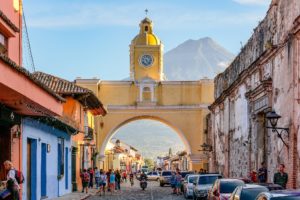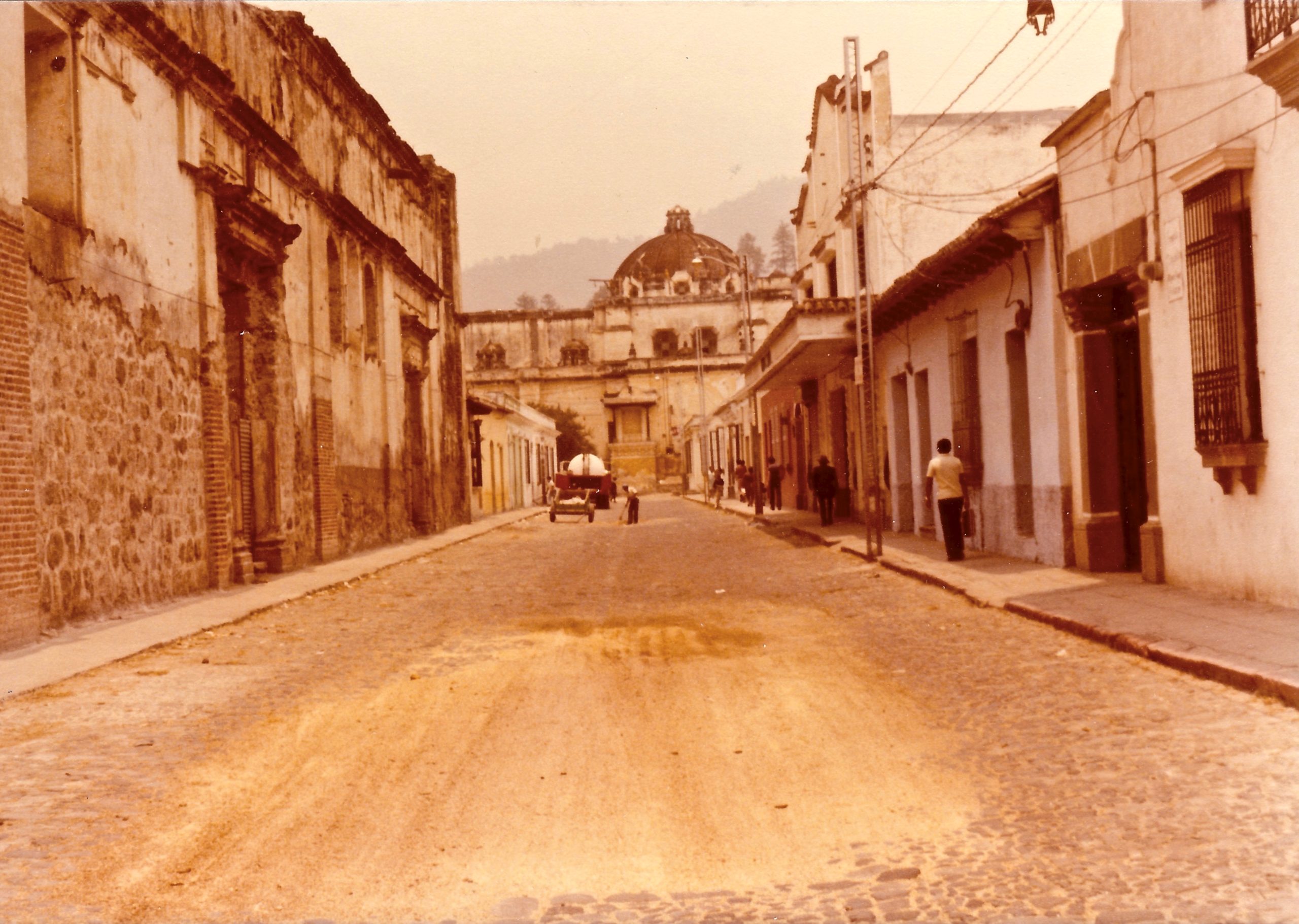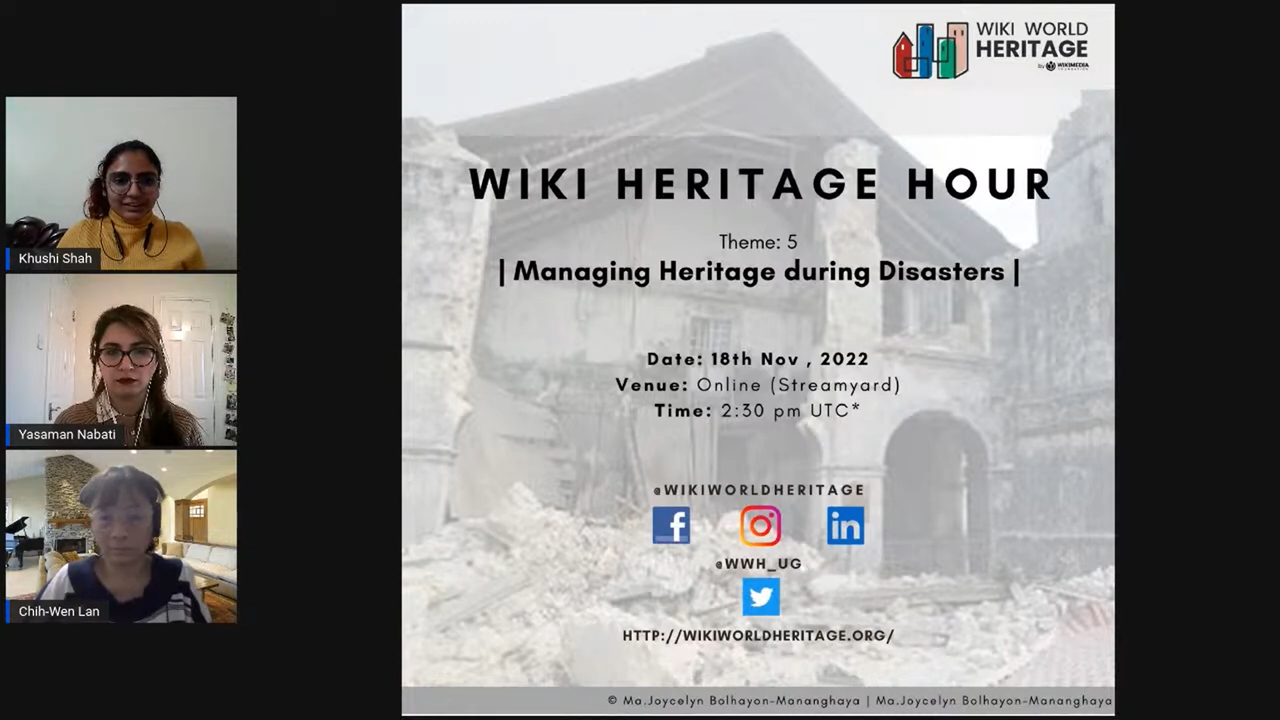Told Cities aims to create a comprehensive documentation of the monuments, significant structures, and other defining features found in these World Heritage Cities through Wikimedia projects and available resources.
Recognizing the necessity for documentation and knowledge-sharing on open-source platforms, Wiki World Heritage joined forces with countries worldwide in response to this need.
Empowering Antigua Guatemala Through Wikipedia: A Collaboration with Centro Regional De Patrimonio
About: Antigua Guatemala: A Cultural Gem

Santa Catalina Arch – Antigua Guatemala, PC: Chad Davis, CC BY-SA 2.0
Antigua Guatemala is the former capital of the Captaincy-General of Guatemala. The city was established in 1524 under the name Santiago de Guatemala. It has witnessed several uphills and downfalls which includes the destruction by fire due to an indigenous uprising, rebuilding in 1527, and complete burial caused by earthquakes and an avalanche in 1541.
The third incarnation of the city, situated in the Valley of Panchoy or Pacán, was inaugurated in March 1543 and thrived for 230 years. It withstood natural disasters like floods, volcanic eruptions, and severe tremors until 1773 when the Santa Marta earthquakes inflicted significant damage.
Consequently, authorities decided to relocate the capital to a safer area, which eventually became Guatemala City, the modern capital of the country. Nevertheless, some residents remained in the original town, now known as “La Antigua Guatemala.
The layout of the city, characterized by a grid of north-south and east-west streets, influenced by the Italian Renaissance, stands as a prime example of town planning in Latin America from the 16th century. Most of the surviving civic, religious, and civil structures date back to the 17th and 18th centuries, showcasing magnificent examples of colonial architecture in the Americas. These buildings exhibit a regional architectural style known as Barroco antigueño, which features decorative stucco for both interior and exterior ornamentation, prominent main facades with central window niches and often elaborately carved tympanums, sturdy constructions, and short bell towers designed to withstand frequent earthquakes in the region.1
Wiki World Heritage Collaboration
In our mission to promote Antigua Guatemala’s heritage, it’s important to recognize that there’s no Wikimedia Affiliate in Guatemala. This means there’s a gap in the local community’s ability to contribute to platforms like Wikipedia, Commons, and Wikidata, which serve as digital archives of historical and cultural information.
Our collaboration with Centro Regional De Patrimonio aimed to bridge this gap. We organized a “train the trainer” session, where participants learned the ins and outs of contributing to these platforms. Led by Nassima Chahboun, an experienced Wikimedia contributor, this workshop equipped locals with the skills needed to document their city’s history, culture, and traditions and use the tools to make the information accessible to all.
Why Wikipedia, Commons, and Wikidata?
A persistent question that is often asked by people, is why it is important to document these cities and places on Wikimedia.
The fundamental reason for choosing Wikimedia is to make information research and culture available to all across the world who have access to the internet.
Wikimedia is a database of several projects, Wikipedia and Wikimedia Commons being the most popular ones.
Wikipedia is the world’s largest online encyclopedia, making it an ideal platform for sharing knowledge about Antigua Guatemala. Commons is a repository for free images and multimedia files, while Wikidata serves as a structured database for information that can be used across Wikimedia projects. By using these platforms, the community can create a comprehensive digital archive of the city’s heritage.
The Impact and Future
We received 125 applications for the program in phase 1. After the successful implementation of Phase 1, another roll call was also made for Phase 2 of the program.
The impact of this partnership goes beyond just contributing to online platforms. It’s about fostering a sense of ownership and pride within the local community. By becoming active contributors to platforms like Wikipedia, residents of Antigua Guatemala can ensure that their city’s history is accurately represented and celebrated on a global scale.
As we move forward, we hope to see more collaborations and initiatives that empower communities worldwide to document and preserve their cultural heritage. Antigua Guatemala serves as a shining example of what can be achieved when passionate individuals and organizations come together with a shared goal.
Reach out to us!
If you have an idea for an under-represented world heritage city and you want to work with us, please reach out with a proposal and we will get back to you!
References:
- Reference: https://whc.unesco.org/en/list/65/
The description is available under license CC-BY-SA IGO 3.0



